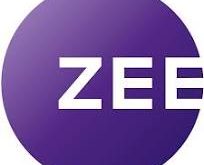Bengaluru, 20th March 2024: The development of natural gas infrastructure in the southern region of the country will play a critical role in enabling India to achieve its 2030 target of increasing the natural gas share from 6% to 15%. Critical infrastructure projects such as GAIL’s Dhabol-Banglore and Kochi-Kootataanad-Manglore-Banglore pipelines have actively expanded the gas grid across states like Andhra Pradesh, Telangana, Tamil Nadu, Karnataka, and Kerala. Additionally, IOC’s Ennore-Tuticorin gas pipeline is expected to commission soon, which will further boost the gas consumption in Southern part of the country.
This expansion offers abundant opportunities for industries along more than 5,000 km pipeline in the southern states of Andhra Pradesh, Telangana, Tamil Nadu, Karnataka & Kerela to source natural gas at competitive prices from the market. Completion of gas-grids and these pipelines and connectivity with regional network along with operational LNG terminals at Ennore and Kochi, the region is poised for robust economic growth driven by a thriving gas-based economy. Furthermore, the expansion of city gas distribution networks particularly in tier 2 and tier 3 cities across the southern region adds to the success. This initiative aims to offer households access to cleaner cooking and transportation fuels, thereby contributing to reducing carbon emissions and improving air quality in urban areas.
Despite challenges hindering nationwide expansion, significant investments have been channelled into critical infrastructure projects such as City Gas Distribution (CGD) networks, LNG terminals, and natural gas transmission pipelines. With India’s natural gas demand reaching ~190 MMSCMD, supported by domestic supplies and international LNG shipments, infrastructure development has been instrumental in propelling the market forward. Gujarat exemplifies this transformation with three LNG terminals boasting a combined capacity of 27.7 MMTPA, alongside a comprehensive state-wide natural gas grid and extensive CGD network coverage. With a notable 25% share of natural gas in its energy mix, comparable to leading European countries.
As per PNGRB regulations customers having demand above 50,000 SCMD can directly connect to natural gas transmission networks and replace oil and coal with natural gas. Such customers enjoy the benefits of sourcing gas directly from the market/ gas exchange at competitive prices.
To further maximise the potential and access to natural gas, platforms like the Indian Gas Exchange (IGX) play a pivotal role in providing a flexible and convenient platform for gas trading for its customers. Opting for IGX brings forth advantages such as transparent pricing, a dynamic and competitive market environment with multiple sellers and buyers, flexible contract durations, efficient market access, and an expanded market reach. By embracing the competitive pricing and flexibility in gas sourcing offered by exchanges, industries can seamlessly transition to natural gas, thereby contributing to a reduction in carbon footprint and fostering a cleaner, sustainable energy future.
 Newspatrolling.com News cum Content Syndication Portal Online
Newspatrolling.com News cum Content Syndication Portal Online






